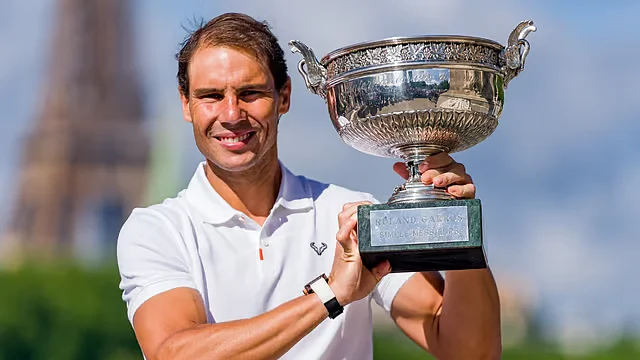Tennis superstar Rafael Nadal, with 22 Grand Slam singles championship titles to his credit and one of the top three players of his time, with Roger Federer and Novak Djokovic, has announced his plans to retire after the Davis Cup finals in Malaga in his home country, Spain, next month.
The 38-year-old star has been in and out of injuries for some time. The Spaniard announced the decision in a video message on X today. His contemporaries, Federer, retired in 2022, while Djokovic is still in the game and won the gold medal for men’s singles at the 2024 Paris Olympics after defeating Nadal in the semifinals.
Here are three lessons to learn from Rafael Nadal’s retirement decision.
A Well-Thought Out Decision:
Injuries are part and parcel of any sportsperson’s life, and Nadal’s case is no different. He suffered many injuries throughout his career, which is one of the factors he said has been a consideration for his decision. In the X post, he said, “I am here to let you know that I am retiring from professional tennis. The reality is that it has been some difficult years, these last two especially. I don’t think I have been able to play without limitations. It is obviously a difficult decision, one that has taken me some time to make. But in this life, everything has a beginning and an end and I think it’s the appropriate time to put an end to a career that has been long and much more successful than I could have ever imagined.”
Stretch Your Limits, Be Competitive:
For some players, age is not a factor for retirement. Federer retired at 41, Andy Murray at 37, and Nadal will retire at 38. Their long career spans show they have stretched their fitness levels to the maximum limit before their decision to step back from competitive sports.
Nadal injured his elbow during the 2003 French Open when he was only 17. After that, he suffered a scaphoid stress fracture, injuries to his foot, knees, wrist, and hip, and was down with a stomach virus. However, he bounced back every time he faced a setback.
Here’s a lesson for the common people—try hard and be resilient during the active work life, and re-skill and up-skill to remain competitive.
Build A Support System:
A strong support system of family and friends is vital, especially after retirement when you will lots of time to spend. Bonding with family, friends, and well-wishers will help make that transition easy. Nadal expressed his gratitude to his family, parents, uncle, team, rivals, and the fans that supported and loved him. He says, “You, the fans. I can’t thank you enough for what you have made me feel. You have given me the energy I have needed at every moment.”
Retirement is an inevitable part of life but when that happens, stay positive and productive.
Although Nadal did not disclose his post-retirement plans yet, he is satisfied with what he achieved and looking forward to his retirement from competitive sports. “Really, everything I have experienced has been a dream come true. I leave with the absolute peace of mind of having given my best of having made an effort in every way. I can only end by saying a thousand thanks to all, and see you soon.”










